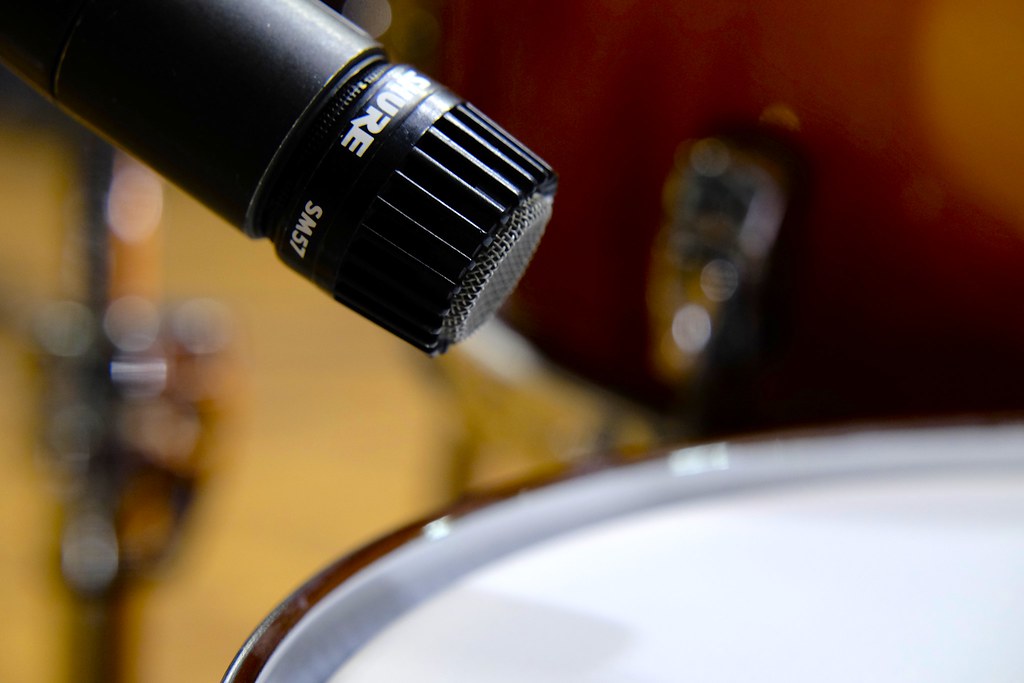The Shure SM57 is the definitive workhorse microphone. It’s ubiquitous across the world, from home project studios to world-renowned places like Sunset Sound. The microphone is rock solid, pragmatic in cost and usage, and highly effective. It’s impossible to miss it in any professional recording studio.
With that said, the SM57 is arguably the most popular and recognizable mic ever made. Practically everybody — whether they’re aware of it or not — has heard it on some recording since 1965. Engineers love it on snare, guitar cabinets, and even on the Presidential Podium! So how did the world’s most used microphone come to be?
Prior to the Shure SM57’s debut in 1965, Shure had already established itself as a major player in the recording business (the 57’s origins can be traced back to the ’30s). They were already the most popular producer of turntable cartridges, and had found other, perhaps unusual, success in making making throat microphones for the US Air Force allowing pilots to communicate in flight.
Shure was also responsible for the microphone most associated with Elvis Presley: the Model 55S, released win 1951. This particular mic got a lot of attention not only because of its instantly recognizable style, but also its affordability over the more common ribbon mic of the era, and its awesome sounding capsule: the ‘Unidyne,’ developed by Ben Bauer in 1939.
The engineers at Shure continued developing and improving the capsule over the years. At one point, the engineer Ernie Seeler came up with the Unidyne III capsule, which became the one used in current Shure SM57s. Initially, the Unidyne III found itself in the Shure Model 545 in 1959 — seven years before the 57 came to be, though its design was almost identical.
The Unidyne III Model 545 was the direct predecessor to the Shure SM57. It became the first high-quality unidirectional microphone used by speaking into the end (end-firing) rather than the side of the microphone. The Model 545 was again a success because of its quality sound and affordability. Before the 545, microphones were prone to feedback and less accommodating to close-miking because the capsule didn’t get right up against the source. This meant more ambient noise would get into a recording — something the 545 managed to mitigate.
The 545 naturally found its way into many recording studios because of its groundbreaking design. It was perhaps most notably used on Brian Wilson’s vocals for Pet Sounds, to capture his voice while recording live in the room with the Beach Boys. But the engineers at Shure weren’t satisfied yet, and continued to try to improve upon the already well designed 545. TV was growing ever more popular, so the company decided it would build a mic for this use.
The Unidyne III proved to be an excellent capsule; that was a fact. But Shure wanted a virtually indestructible microphone housing that could withstand the rigors of TV studios.
Naturally, they began testing their designs by cooking them, dropping them, and submerging them in water. By some miracle they eventually had a heroic microphone that survived the tests, then gave its body a non-reflective coating to not be flashy on camera. They removed the on-and-off switch and, in 1965, Shure affixed ‘SM’ to the model for “(TV) studio microphone.”
It wasn’t long before this microphone’s tough-as-nails reputation made its way into the live sound industry, and techs started to bring them along to every gig. Of course, recording engineers began making use of them as well, contributing to the Shure SM57’s legacy as one of the most famous microphones ever made.
The Shure SM57 is rugged and reliable with a clean, natural sound. It continues to be one of the most popular instrument mics ever, and still serves as the U.S. President’s lectern microphone, as it has for every President since Lyndon B. Johnson…
